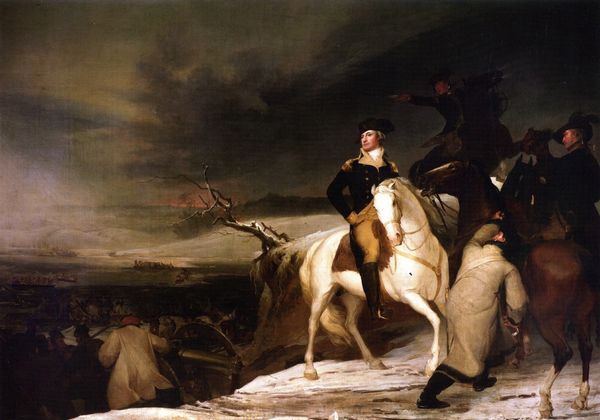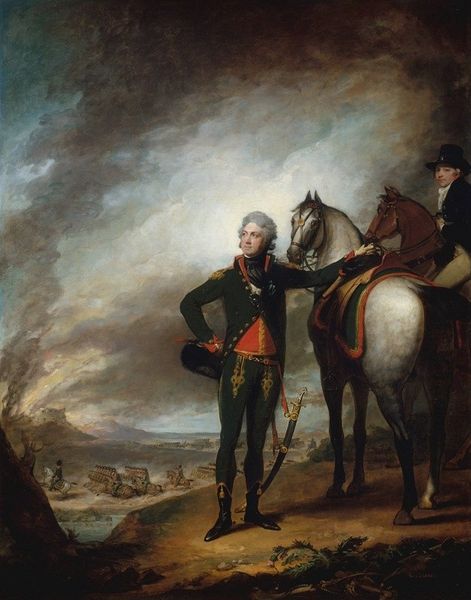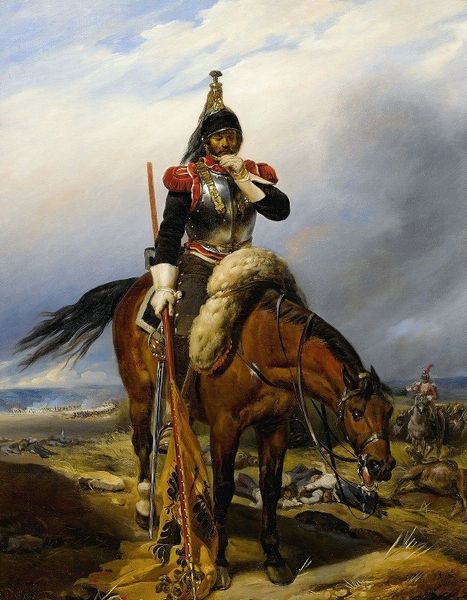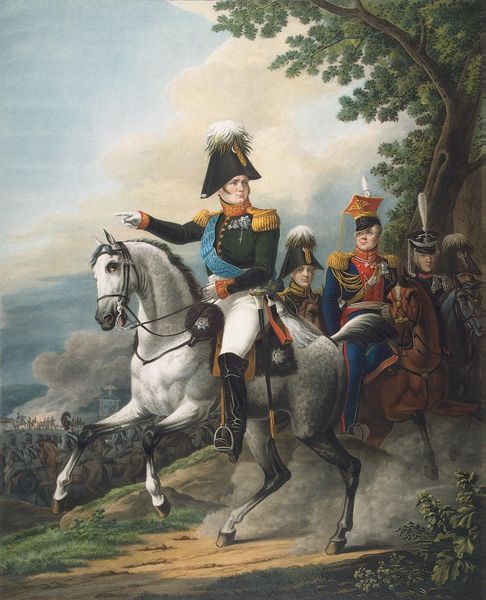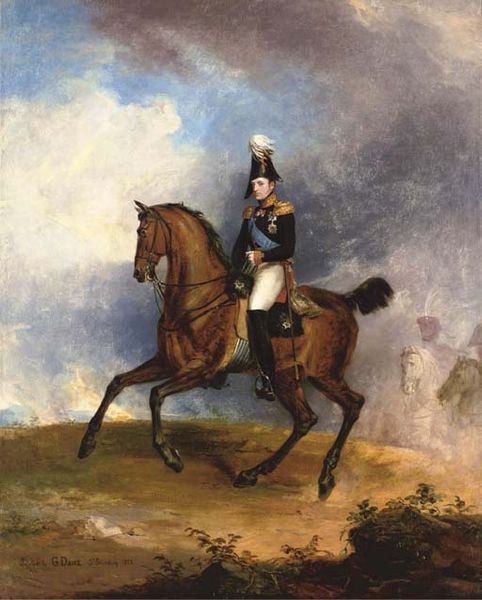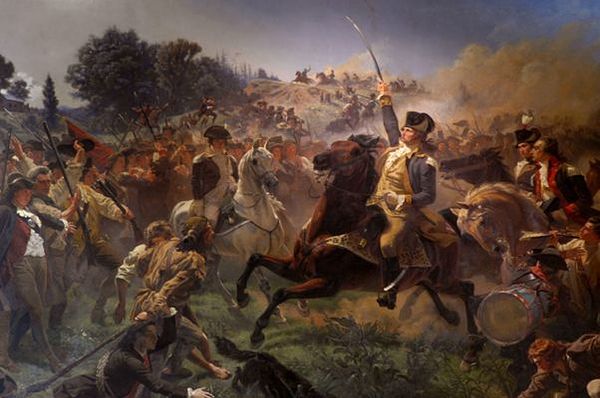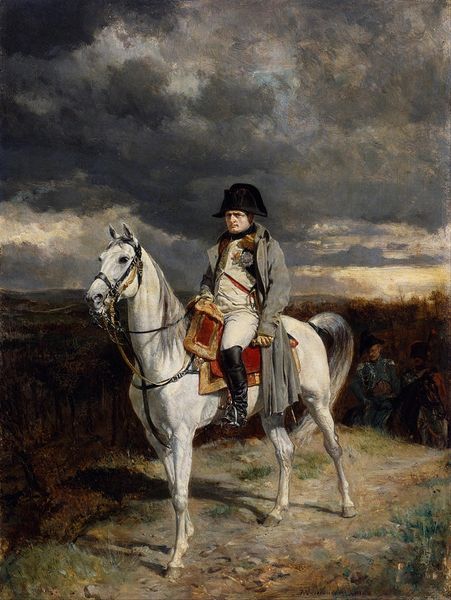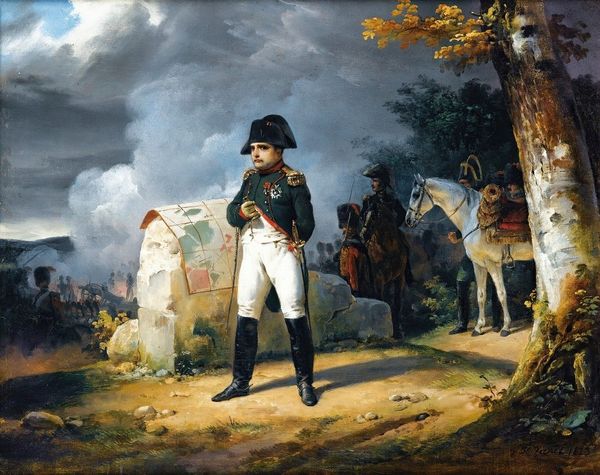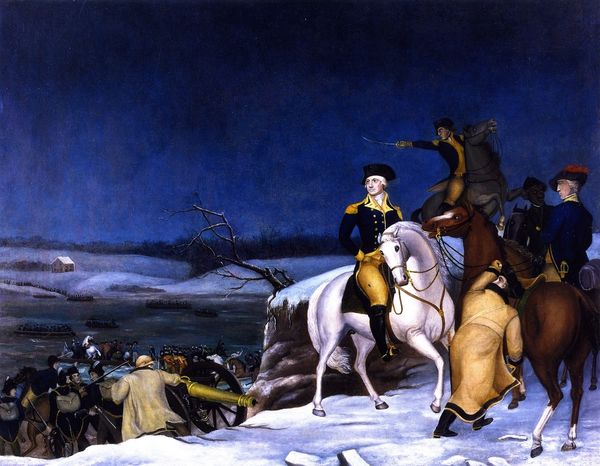
painting, oil-paint
#
portrait
#
painting
#
oil-paint
#
landscape
#
figuration
#
oil painting
#
romanticism
#
history-painting
Copyright: Public domain
Editor: Here we have Thomas Sully's "The Passage of the Delaware," painted in 1819, and rendered in oil paint. It feels monumental, but what really strikes me is the sheer effort involved in moving troops and equipment across this icy river. What can you tell us about the materiality and social context behind this piece? Curator: Indeed. A key question is, why paint this particular subject, this way, in 1819? Sully is crafting an image not just of Washington, but of American identity. The work emphasizes the physicality of the revolutionary effort, the labor of the common soldier pulling those cannons. This wasn’t just a top-down affair; it was fueled by collective effort. Consider the romanticized depiction – what real materials were available to the revolutionary army and what choices did Sully make about how they would be rendered? Editor: So you're saying it's less about historical accuracy and more about the narrative Sully constructs through the act of painting itself? Curator: Precisely. Look at the scale. Sully, working nearly 50 years after the event, consciously created a canvas that would become a national icon. But think about where and how such an immense work might have been shown or stored? These choices inform and shape public memory. Editor: That's fascinating. It makes me think about the materials Sully used - were they readily available, or did the choice of pigments or canvas itself contribute to the painting's message? Curator: That's the right question to ask! Where did Sully obtain his canvas? Pigments? And how does the accessibility of these raw materials factor into the image he presents? It challenges our notions about how history painting operates, doesn’t it? Editor: Absolutely. Thinking about the actual making of the artwork this way provides such a richer understanding! Curator: I'm glad we considered how this work transforms both materials and memories.
Comments
No comments
Be the first to comment and join the conversation on the ultimate creative platform.
